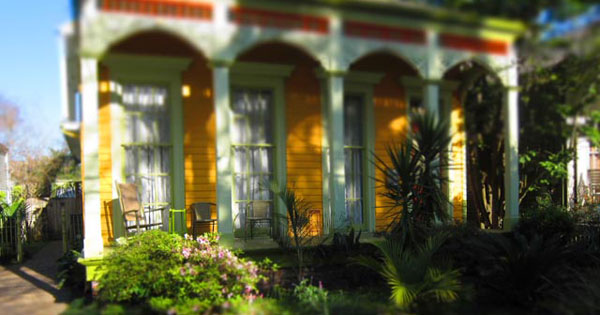
Nearly nine years ago, my wife and I made an offer on a house in New Orleans we’d found on Craigslist. This was the summer following Hurricane Katrina and the storm surge that overwhelmed shoddy floodwalls and inundated about 80 percent of the city. We closed on the house a few weeks after the storm’s first anniversary.
Our house was on high ground, off Magazine Street, in a part of town developed more than a century ago. The previous owner was a single mom who had evacuated to Boulder, Colorado, with her two children. She never returned. The cupboards in the house were still filled with her canned food and paper muffin cups. Her real estate agent told us that being a mile above sea level wasn’t all that appealed to her, but rather her discovery that public schools elsewhere actually provided a good education, and children actually went to them by choice. Our first purchase was a new refrigerator. As was the case everywhere in the city, the old one had been hauled full of rotting food to the dump, leaving only a ghostly imprint on the brick kitchen floor.
Our decision to move to New Orleans from New England took root well before Katrina. The very short version is that my wife had grown tired of the Maine winter, and I had grown tired of listening to her complain about the Maine winter. (She has a longer, more complicated version.) I had come to New Orleans on a research project in early 2005 and found it appealing for a multitude of reasons, mostly having to do with a persistent feeling that I was born in the wrong century and possibly the wrong country. I visited again two weeks before the storm and explored some neighborhoods and looked at some houses for sale. The move seems doable. Eight days after I returned north, I watched from afar as the flood nearly drowned the city.
Virtually every person I tell this story to comments, Oh, you must have gotten an amazing deal on a house! Actually, no. Six months after the flood, I flew back to New Orleans to see what was going on. I still had the real estate flyers from my earlier visit, and found that the asking price of the houses we’d liked had gone up 10 or 20 percent. We were set on buying an older house, and it turned out that many older houses didn’t flood because they were built on higher ground, at a time before New Orleans developed a misguided faith in things like levees and canal walls.
We surely could have gotten a deal on a flooded and ruined house, but we didn’t know a single local carpenter, electrician, or drywall guy, and the idea of competing with 80,000 other homeowners for their services seemed both daunting and selfish. It also probably would have made more sense for us to rent for a year or two while we figured things out. But we heard talk about carpetbaggers coming to town to get construction and federal relief jobs, and the assumption was that all newcomers would ebb like floodwaters when the money dwindled. To help inoculate us against that judgment, we decided to buy a home and put down roots.
When we arrived with a moving van, strangers in our neighborhood hugged us when they learned we were moving in instead of out. It was nice to feel we were part of the solution. But in the years since, we’ve started to feel as if we’ve become part of a broader problem—of being outsiders who’ve showed up and, wittingly or not, have begun to change the city’s historic character and temperament. New Orleans learned a lot about itself after the flood, but the rest of America also learned a lot about New Orleans, and many have decided they liked what they learned and moved here in increasing number.
I’ll be contributing a series of weekly postcards from the city, reporting on the city’s slow transition from yesterday to tomorrow, and other aspects of life in New Orleans. It will cover the better part of a year—through Mardi Gras and Jazzfest and into summer, finishing up at the 10th anniversary of Hurricane Katrina at the end of August.
Despite the upending and all the changes in the past decade, New Orleans still feels to me a bit like a cultural Galapagos, where customs and traditions evolve independently of the mainland, and prove resistant to change. After nearly a decade as a resident of New Orleans, I’m happy to report I still haven’t come close to figuring this city out.

